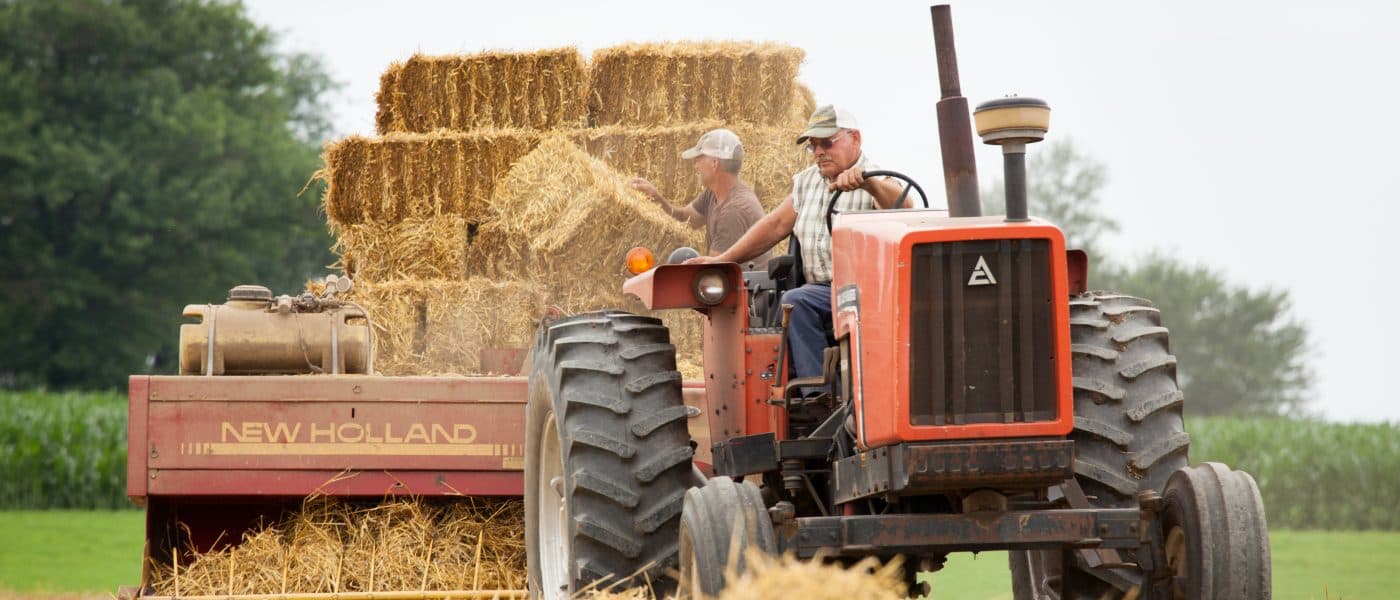March 2009
Dear Hilde,
I am excited to see Farm Aid providing more opportunities for its readers to be politically active. Thank you! Your action-alert on genetically engineered food got me thinking – just how exactly are GE crops regulated? And how can I be sure that I am protected?
Thanks,
Eleanor B.
Chapel Hill, North Carolina
Dear Eleanor,
You’ve asked a really good question. For all of our sakes I wish I had a simpler answer. Unlike a lot of things that we do to our food – pasteurizing, preserving, packaging and shipping across state borders – genetic engineering doesn’t have its own explicit set of rules for regulation. If you want to add artificial colors to a product, there are mandatory tests for that. But if you want to add a completely foreign gene, let’s say from a fish into a tomato – hey, go for it! Ultimately, our government’s regulation of genetically engineered food is a poorly coordinated and ambiguous system of voluntary guidance for industry. In other words: it’s a bit of a mess.
Before I delve too deeply into the regulatory weeds, let me back up for a minute and give you some context.
Genetic engineering is the ability to selectively move genes from one species to another across biological boundaries that previously separated organisms. Scientists can take a gene from the DNA of a bacterium, for example, and transfer it into the DNA of corn, creating a final product with a specific desirable trait (in this case, protection from insects). This modification is conducted at the molecular or cellular level by means that are not possible under natural conditions. So when proponents of the technology claim genetic engineering is a natural evolution of traditional plant breeding techniques that have been employed for thousands of years, that simply is not true. This is novel technology with its own novel risks.
For more detail on some of the profound considerations of genetic engineering when it comes to public health, the environment, and our farm and food economies, I recommend checking out Farm Aid’s GE fact sheet or this archived “Ask Laura” column for a primer.
And now back to the question at hand: just how exactly are GE crops regulated? Unfortunately, not very well! When faced with the decision of how to best regulate emerging GE technology, the government took the stance that existing statutes were sufficient for dealing with genetic engineering and that regulations should be based on the end product rather than the process by which they were developed. So, instead of having, let’s say, one federal agency to approve GE products and provide oversight based on a singular statute, there are in fact three central agencies overseeing genetic engineering, involving ten or more laws that were enacted before the technology even existed.
The three central agencies are the Food and Drug Administration (FDA), the Environmental Protection Agency (EPA) and the US Department of Agriculture (USDA), primarily through its Animal and Plant Health Inspection Service (APHIS).
The FDA regulates GE food for human and animal consumption. Despite the absence of thorough testing of the long-term implications of GE, not to mention the potential for allergens and food toxins to transfer or be created in the process of genetic engineering, FDA policy provides that foods developed through this technology show no inherent dangers that would require extraordinary testing or regulation. In turn, FDA treats genetically engineered foods just like conventionally produced foods unless new ingredients or unusual attributes are created. They call this standard “substantial equivalence,” meaning they consider GE corn and regular natural corn to be exactly the same for the purpose of determining food safety.
The EPA has authority over genetically modified organisms designed to act as pesticides. Common crops such as corn and soy have been engineered to contain pesticides in every cell of the plant. As a result, these crops are not regulated as food – they are actually considered pesticides.
And, finally, APHIS ensures that new GE crops do not become pests through genetic contamination of both cultivated and wild fields. APHIS regulation has been unsuccessful in many instances in preventing contamination of GE pollen, leading to the rejection of US commodities in export markets and huge economic losses to farmers and the food industry alike. Even worse, farmers have been prosecuted for being victims of genetic drift of GE pollen into their fields. Despite this poor track record, in late 2008 the USDA proposed a rule that would significantly weaken their already tattered rules for regulation. Through Farm Aid’s newly launched Action Center, close to 2,000 of you (applause and thanks!) took advantage of the recent opportunity to publicly comment on USDA’s policies, urging the agency to strengthen its oversight and rethink the way it regulates GE.
The rapid, often unknown, entry of GE crops into our fields and unlabeled on our grocery shelves over the past thirteen years has put policy and science on an urgent course to resolve a number of concerns involved in the use and regulation of the technology. In the meantime, roughly 150 million acres have been planted in the United States alone – representing more than 50% of the total GE crops planted worldwide. The perceived need to approve GE products relatively quickly is at odds with the protection of human health, a precautionary ideal rooted in objective and sound scientific data that takes time for sufficient collection and review.
And what’s the hurry, after all? Genetic engineering has not been received as something necessarily beneficial for the consumer or the farmer. While many proponents of these products claim that GE will make crops less susceptible to weather and decrease world hunger, no seed is commercially available that was designed to increase yield, enhance nutrition or make the crop more drought or salt tolerant. Actually, most of the GE crops in current use have been developed by big multinational companies such as Monsanto in order to meet their own interests in increasing the sales of their related products, such as their brand of pesticides. For more information on who’s really benefiting from GE Crops, check out this excellent study released in early 2008 by the Center for Food Safety and Friends of the Earth International.
So, what can you do to have more of a say about your own exposure to GE and how it’s regulated?
Give your grocery list a second look. It is estimated that GE ingredients can be found in as many as two-thirds of all items in the grocery store. Avoiding heavily processed foods may minimize exposure, since GE ingredients often sneak their way into unassuming foods in the form of high fructose corn syrup and soybean oil. Purchasing pasture-raised meat is an additional strategy for minimizing exposure, as the majority of GE grain crops grown in the US are fed to farm animals. Unfortunately, despite overwhelming consumer demand, no labeling program exists for genetically engineered food in the United States.While there is always the chance for inadvertent GE contamination, purchasing organic food remains the best way to avoid GE ingredients.
Don’t undervalue the power of your purchasing dollar. Many GE crops have been turned away from the marketplace because of consumer and industry opposition. Talk to your grocer and let them know that you’d like GE products to stay off the shelves unless and until the technology for producing those products is deemed safe and regulatory oversight has been improved. A group of grocery chains and food producers recently did the same by signing the Non-Genetically Modified Beet Sugar Registry, a pledge to avoid using GE sugar beets until the long-term health and environmental impacts of GE beet sugar have been properly evaluated.
Get involved in the political process. Once again, a big thanks to all 1,994 of you who already publicly commented on USDA’s recent proposed rule for GE regulation. If you didn’t have a chance to participate by the original deadline of March 17th, you’re in luck because the USDA extended the comment period until June, giving everyone a chance to speak their mind. We’ll be sure to let you know of any additional opportunities for action on GE regulation as they come up – so stay tuned to Farm Aid’s Action Center for updates (and sign up now, if you haven’t already). There’s a lot of important work to be done to strengthen the regulation of GE technology in this country. We can use the support of everyone who’s willing to make some noise to ensure the protection of eaters, farmers and the environment!

